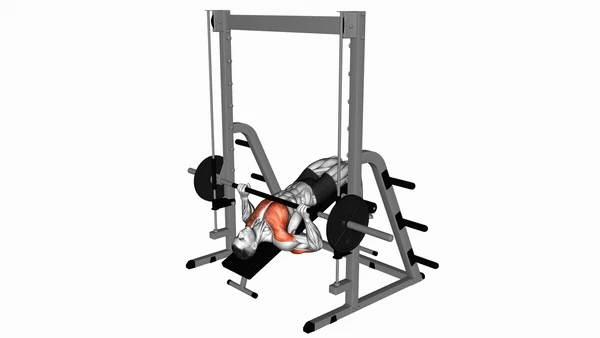Reverse Grip Bench Press

Muscles Involved
The reverse grip bench press primarily targets the chest, shoulders, and triceps, making it an effective pressing movement for upper body strength. The unique reverse grip—where the palms face toward you—engages the clavicular (upper) portion of the pectorals in a way that standard bench pressing does not. This grip also slightly shifts the focus onto the anterior deltoids and engages the triceps brachii more intensively. Secondary muscles involved include the serratus anterior and the muscles of the back, which help stabilize the body during the lift.
Top Mistakes
- Incorrect Grip Width: Using a grip that is too wide or too narrow can lead to discomfort and reduce effectiveness.
- Failure to Maintain Proper Wrist Position: Allowing the wrists to cave in can lead to strain; wrists should be straight to prevent injury.
- Lifting Heavy Weights Too Soon: Attempting to lift beyond your capacity can compromise form and invite injury.
- Not Engaging the Core: Neglecting core tension can lead to a loss of stability, increasing the risk of injury during heavier lifts.
Execution Tips
- Set Up Correctly: Lie on the bench with your back flat and feet firmly planted on the floor. Your head, shoulders, and butt should be in contact with the bench.
- Proper Grip: Place your hands on the bar shoulder-width apart, with palms facing you and thumbs wrapped around the bar for a secure hold.
- Lower with Control: As you lower the barbell to your chest, keep your elbows at a 45-degree angle to your body to prevent shoulder strain.
- Push Up Smoothly: Drive through your feet and engage your core as you press the bar back up, fully extending your arms without locking your elbows.
Workouts
The reverse grip bench press can be effectively incorporated into your workout routine. It is recommended to perform 3-4 sets of 8-12 repetitions, focusing on moderate weights that allow you to maintain form. As a complementary exercise, include standard bench presses or incline dumbbell presses to target different areas of the chest. Additionally, consider pairing it with tricep dips or skull crushers to maximize tricep engagement.
Conclusion
The reverse grip bench press is an excellent addition to your strength training repertoire, offering unique benefits by targeting the upper chest and emphasizing tricep development. By practicing proper form and integrating this exercise into a balanced workout routine, you can enhance your upper body strength and size while minimizing the risk of common bench press injuries.



